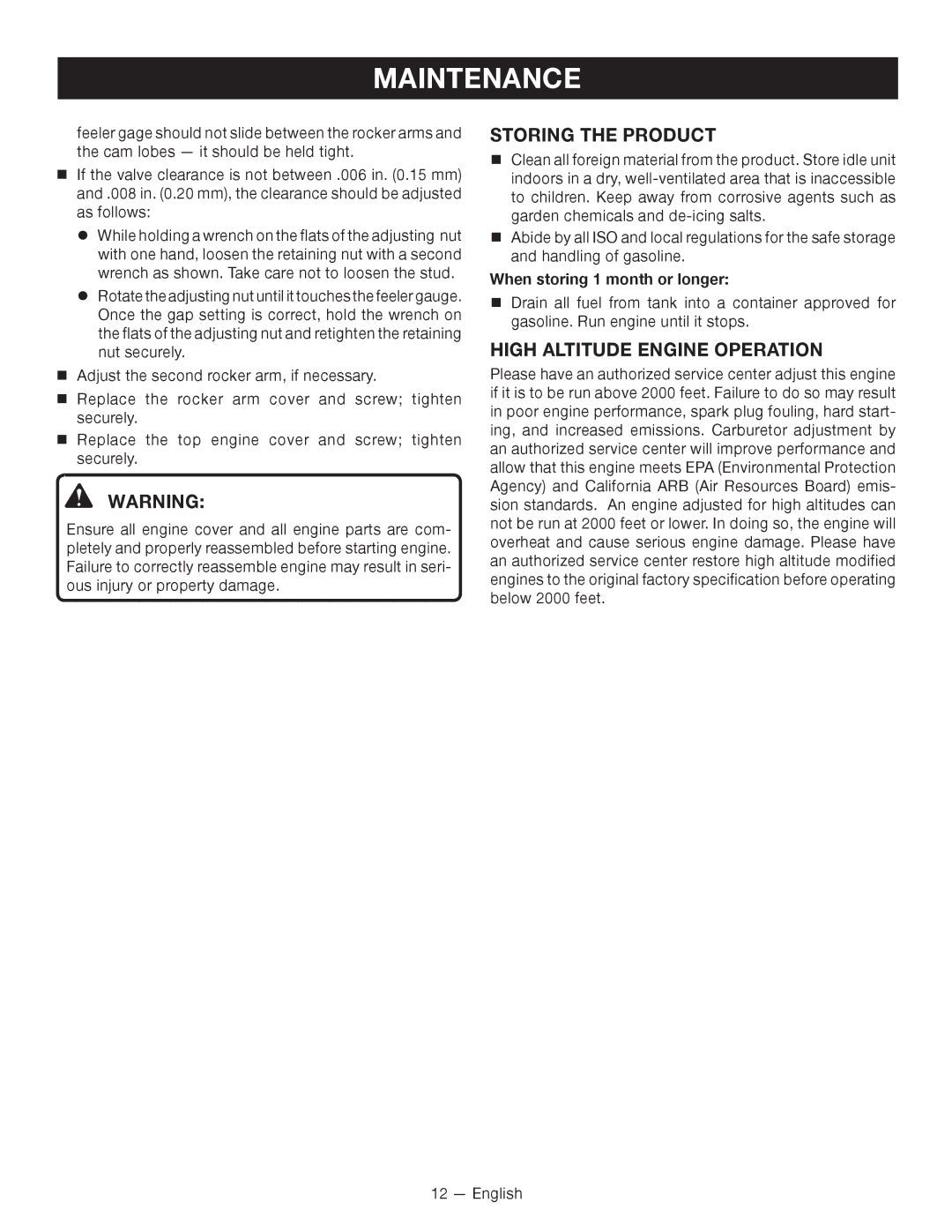
MAINTENANCE
feeler gage should not slide between the rocker arms and the cam lobes — it should be held tight.
If the valve clearance is not between .006 in. (0.15 mm) and .008 in. (0.20 mm), the clearance should be adjusted as follows:
While holding a wrench on the flats of the adjusting nut with one hand, loosen the retaining nut with a second wrench as shown. Take care not to loosen the stud.
Rotate the adjusting nut until it touches the feeler gauge. Once the gap setting is correct, hold the wrench on the flats of the adjusting nut and retighten the retaining nut securely.
Adjust the second rocker arm, if necessary.
Replace the rocker arm cover and screw; tighten securely.
Replace the top engine cover and screw; tighten securely.
WARNING:
Ensure all engine cover and all engine parts are com- pletely and properly reassembled before starting engine. Failure to correctly reassemble engine may result in seri- ous injury or property damage.
STORING THE PRODUCT
Clean all foreign material from the product. Store idle unit indoors in a dry,
Abide by all ISO and local regulations for the safe storage and handling of gasoline.
When storing 1 month or longer:
Drain all fuel from tank into a container approved for gasoline. Run engine until it stops.
HIGH ALTITUDE ENGINE OPERATION
Please have an authorized service center adjust this engine if it is to be run above 2000 feet. Failure to do so may result in poor engine performance, spark plug fouling, hard start- ing, and increased emissions. Carburetor adjustment by an authorized service center will improve performance and allow that this engine meets EPA (Environmental Protection Agency) and California ARB (Air Resources Board) emis- sion standards. An engine adjusted for high altitudes can not be run at 2000 feet or lower. In doing so, the engine will overheat and cause serious engine damage. Please have an authorized service center restore high altitude modified engines to the original factory specification before operating below 2000 feet.
12 — English
